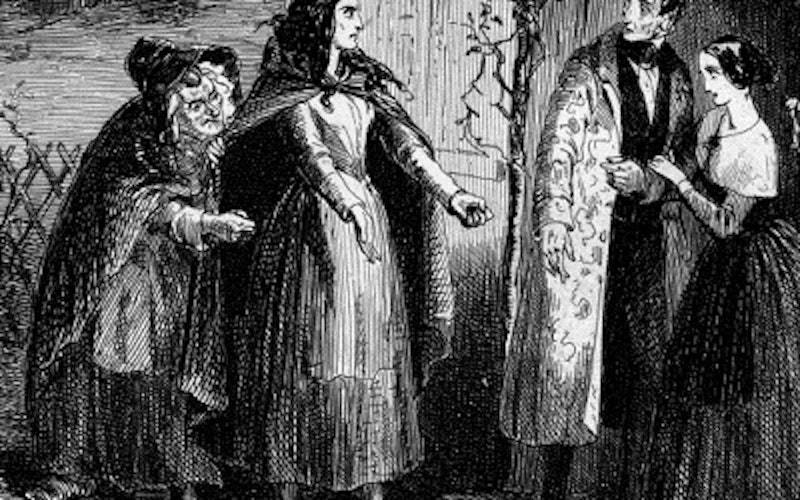
Culture At Large
Charles Dickens and tales of Providence
•
Today, on his 200th birthday, Charles Dickens is a writer for our times. Dickens is the rare artist appreciated both in his own day and by succeeding generations. Art that can be explained away by its component parts is not likely to be great art; the greatness of Dickens’ art, ultimately, is that je ne sais quoi that separates a good work from the masterpiece.
Even so, some aspects of Dickens’ artistry are clearly identifiable. His characters are mythic, yet seem to pulse with the blood of real individuals. His narrative voice captures equally the comic and tragic, the local and the epic, the silly and satiric, the sentimental and the dramatic. His intricate, improbable plots demand the willing suspension of disbelief as we surrender ourselves in delight to the laws that govern his imaginative worlds.
Dickens was no aloof artist who fancied himself above the materials of his craft. He knew the world he lived in with a depth and intimacy few can claim: he knew fatherlessness, poverty, debt, envy, struggle, and hard-won success. It is said he walked hundreds of miles through the roughest pockets of London. With that knowledge, he reflected in his works the variety, abundance, and oddity of a universe that is at once the source of much wonder and despair. He arouses in the reader sympathy for orphans; sorrow over death that comes too soon; outrage at injustices great and small; admiration for selfless blacksmiths; disdain for hypocrites, greedy guardians, faux gentlemen, miserly employers, and cruel sisters who bring you up by hand; pity toward forlorn criminals. Dickens can elicit these emotions in us only because he felt them, too.
All of his works exhibit an overarching worldview that recognizes Providence as reigning over even the deepest depravity of man.
Yet, the novels don’t merely reflect society as would a mirror. Like a lamp, Dickens’ words shine on the dark places that the blinders of familiarity shield from sight. Like a prophet, Dickens proclaims the truths neither his contemporaries nor we can, or will, see. In expressing the particularities of his own time and place, his stories continue today to illuminate universal truths of the human condition. A Christmas Carol exposes the Scrooge in all of our hearts. Great Expectations portrays the journey we all take to find our true identity and our true home. The labyrinthine Bleak House embodies the idea that justice delayed is justice denied. A Tale of Two Cities, a gospel-saturated work, depicts institutionalized evil, and yet at the heart of the story is a man who lays down his life for another—and, in losing his life, saves it. All of his works exhibit an overarching worldview that recognizes Providence as reigning over even the deepest depravity of man.
Dickens himself was far from an exemplary Christian; both his life and his theology were flawed. For Dickens, as for many in his Victorian society, Christ’s humanity often eclipsed His divinity, and an emphasis on works sometimes overshadowed the doctrine of grace. Yet the body of Dickens’ work reveals an honest struggle to distinguish the outward forms of religion from its essence, and pharisaical piety from Christ-like love. Such an effort is as timely today as it was then.
For Discussion
- What is your favorite Dickens novel?
- What Biblical themes do you see in his work?
- How does Dickens' writing still resonate today?
Topics: Culture At Large, Arts & Leisure, Books, News & Politics, History